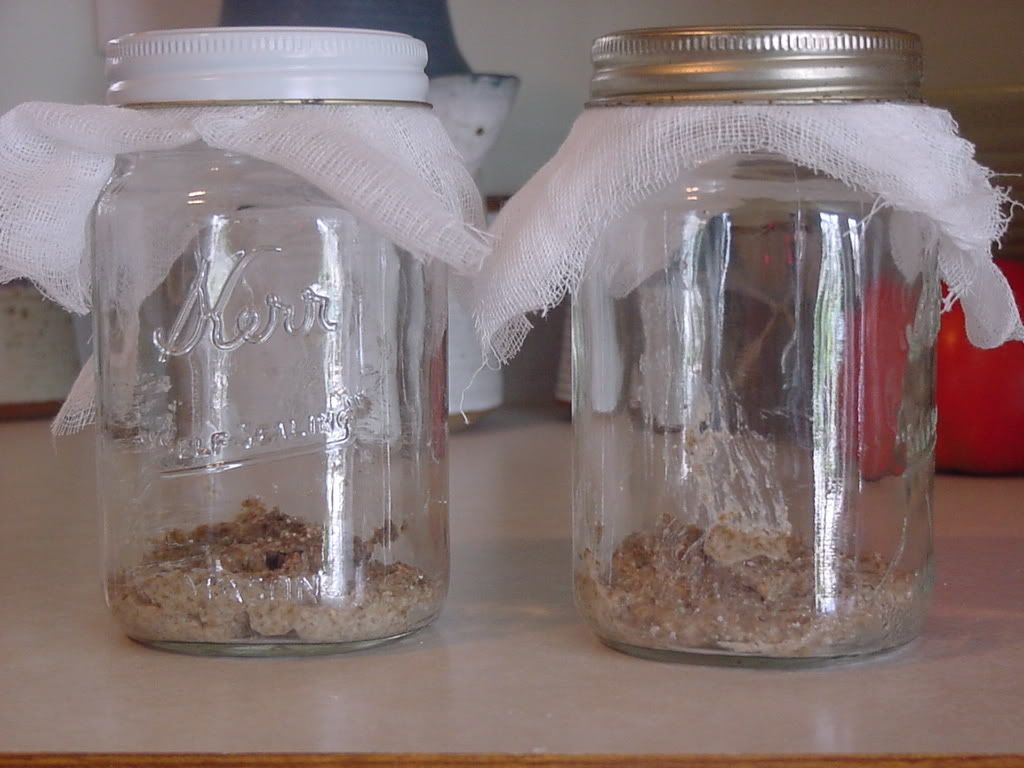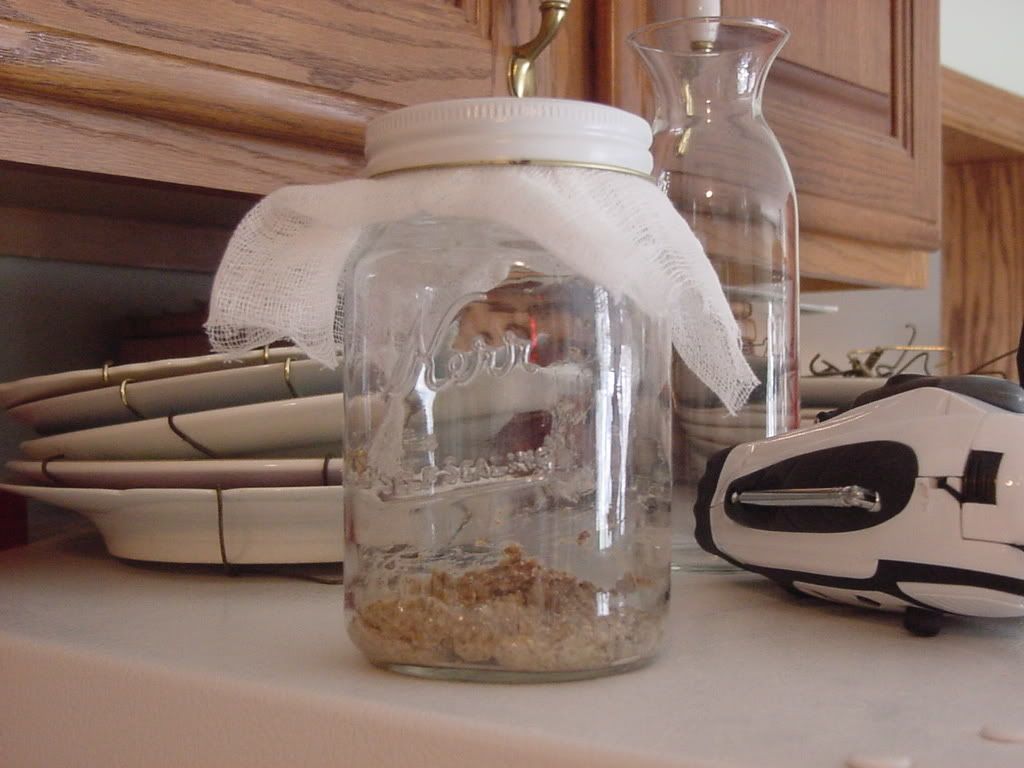After reading all the discussions about "flour vs. micro organisms" in getting a good starter, I decided to run my own test.
I believe that the flour has all the vital nutrients that a starter needs to survive, but I also believe that the location and local flora and fauna play a part. I believe that is what makes San Francisco sourdough taste different than a Russian sourdough, which tastes different from a European sourdough.
A few months ago I started a starter out in my garden, and it behaved quite differently than the one I had started in my kitchen. They were started about 6 months apart, so there was no real way to tell what caused the difference. So, to eliminate several variables, I've started a new experiment.
1. I made 2 starters with 25 grams of rye flour and 25 grams of water.

2. Starter A is resting on the top of the refrigerator where the average temperature is 68 degrees.

3. Starter B is resting out in the garden by the pond where the temperature is ranging between 40 and 72 degrees.

If my theory is correct, they will behave and taste differently. I will admit that I am not using sterile test conditions, but I consider them to be pretty realistic. I also realize that with the weather being nice and the windows being open, the same little beasties that are outside may be migrating inside and could affect Starter A.
At any rate, at worst I'll have 2 more starters to play with!